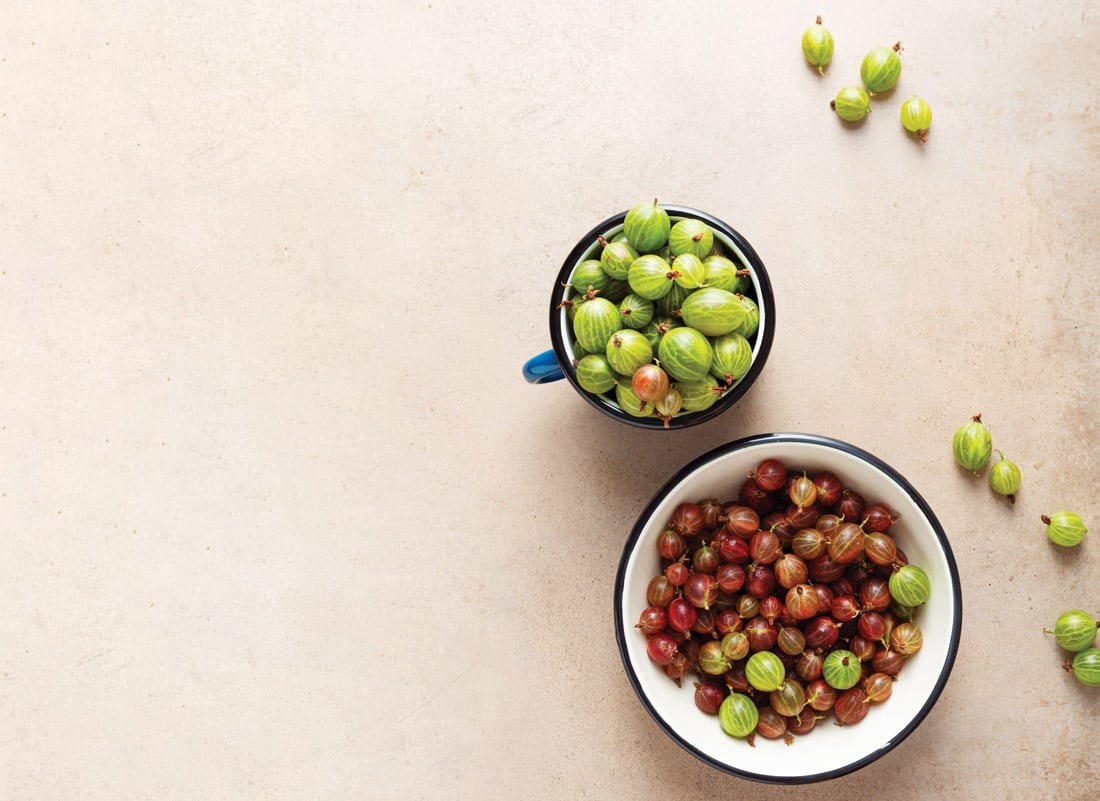Scott Paton, head chef at Àclèaf in Plymouth, reveals why delicous gooseberries are his spring hero ingredient – and shares a few recipes and tips on how to prepare them at home
Gooseberries may have fallen out of favour, but I see a revival of the tangy fruit on the horizon as a summer treat. Diners’ recent interest in sharp and sour flavours (think pickled gooseberry and kimchi) bodes well for the forgotten berry and, as seasonal British ingredients become more popular, I think we’ll see more of them in shops and on menus.
Source
The season starts at the end of May and runs through to the start of July. They’re relatively easy to grow at home (we grow them in the garden at Boringdon Hall) but they can also be picked up at farm shops. If you have a sweet tooth, look for the red variety which is naturally sweeter.
Prep
Simply give them a quick wash in cold water and store in the fridge. They’re quite hardy so they’ll last for at least a week in there.
Serve
Home cooks often think gooseberries are only good for desserts and baking, but they work brilliantly in savoury dishes too. One of my favourite pairings is tart gooseberry compote with fatty fish; something like torched mackerel or salmon works beautifully. They’ve got great acidity, so I’d even top oysters with a tart gooseberry dressing in place of red wine vinegar.
They’re a great fruit for taking on other flavours, so at this time of year elderflower is a delicious match. I like to make an elderflower cordial in which I soak the gooseberries – it’s a creative way to add sweetness without just adding sugar.
I’ve taken inspiration from this for a pre-dessert dish I’m currently working on for a special tasting menu at Àclèaf. It will feature a duck-egg custard with an elderflower sorbet and gooseberry compote.
For a home cook’s first foray, I’d recommend making easy gooseberry jam and then using it in a twist on the classic bakewell tart. Delicious.












